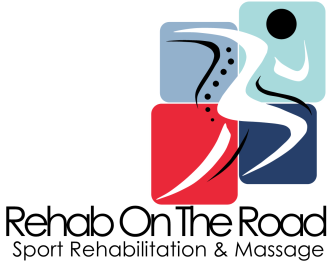
Iliotibial band syndrome (ITBS) has been compared to the feeling of somebody stabbing you in the side of the knee when you run, especially when going downhill. This annoying and painful injury can quickly become crippling if not addressed and corrected. The iliotibial band is a thick piece of connective tissue that runs parallel to your femur (thigh bone) from the outside of your hip to just below your knee. Pain is characteristically felt at the end of the IT band where it attaches to the outside edge of the knee.
Symptoms
- Pain is most frequently felt as a sharp point on the outside of the knee, or (rarely) as sharp pain on the lateral side of the hip.
- Commonly, pain occurs after a certain amount of running; not in the first few steps.
- While pain generally goes away after stopping activity, it often comes back when running is resumed.
- It’s most common in new runners, or after an increase in mileage or hill running
Cause
The short answer is…lots of things. Most people mistakenly believe that ITBS occurs because of a tight IT band — but the IT band is supposed to be tight to do its job!
The source of the problem is almost always weak hip and gluteus muscles. Weak gluteus muscles result in excessive side-shifting or movement of the pelvis which causes your femur (thigh bone) to move abnormally; the outcome being unusual loading of the supportive IT band, ‘pulling’ it away from your knee.
Running downhill and always running on the same side of the road are common culprits.
Many runners find that as fatigue sets in, their ankles or knees collapse inwards, which in turn pulls on the IT band, forcing it to rub against that bony spot on your knee. This re-enforces the importance of having strong legs to prevent injury.
Treatment
ITBS can be challenging to treat, but gluteus muscle and hip strengthening are immensely important in both the prevention and treatment processes.
A regimen of icing and antiinflammatories will assist in reducing pain. A foam roller can be used to loosen up surrounding tight structures as can massage.
Strengthening exercises for hip abductors, core and gluteus muscles will be prescribed by your physical therapist along with a stretching programme.
Avoid aggressive downhill running, ease off on the volume and intensity of training (or take a complete rest if that is advised and cross train to keep fit).
Prevention
Maintaining good soft tissue mobility is essential and can help prevent the development of ITBS.
Strengthening the gluteus muscles and hip, including your core will provide a more stable pelvis and reduce the ‘tugging’ on your ITB.
Always look at your training programme and monitor volume and intensity, as well as excessive downhill routes, too much too soon will cause ITBS.
Remember tips like running on different sides of the road and switching directions if running the same routes frequently or round a track. Vary running surfaces as well. Mix hilly runs with flat routes. Try trails and soft surfaces to ease the pounding placed on legs by only running on roads.
Exercises & Stretches






Contact Me
Let's chat!
Need more information? Send me an email or drop me a line. I don’t bite!
- Charlotte@rehabontheroad.co.uk
- 07971448719
